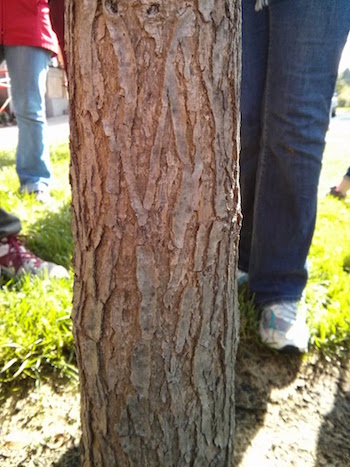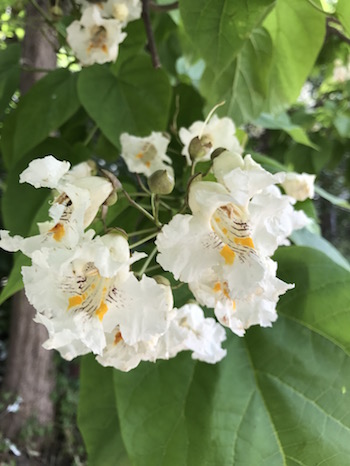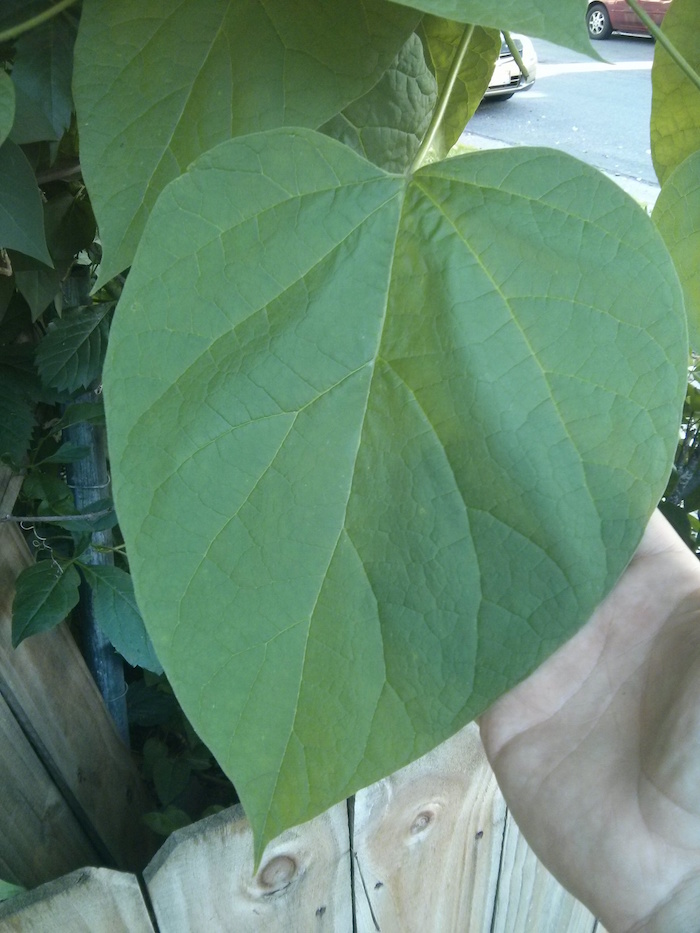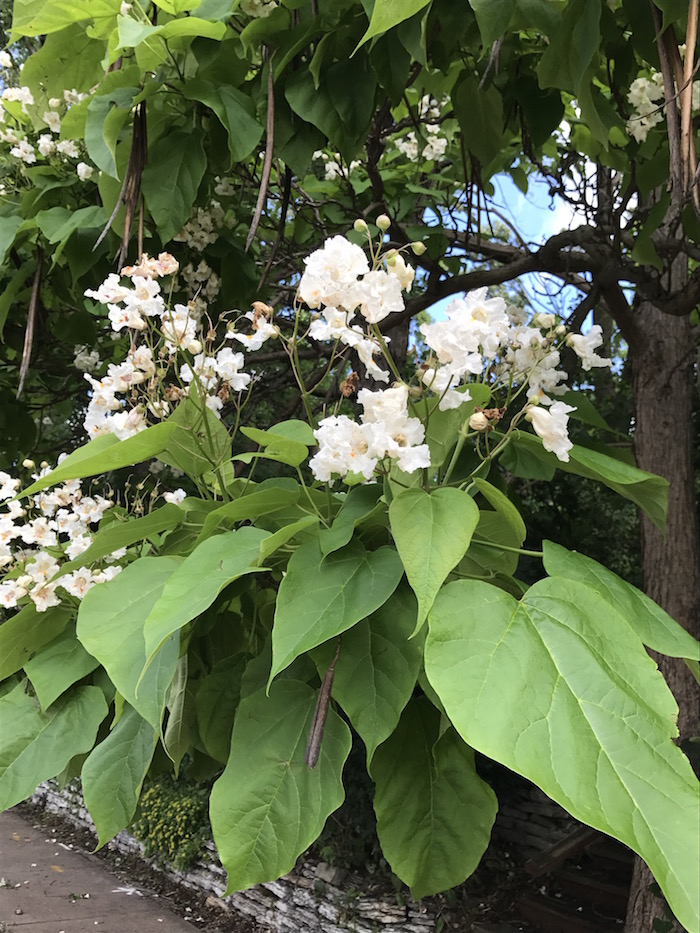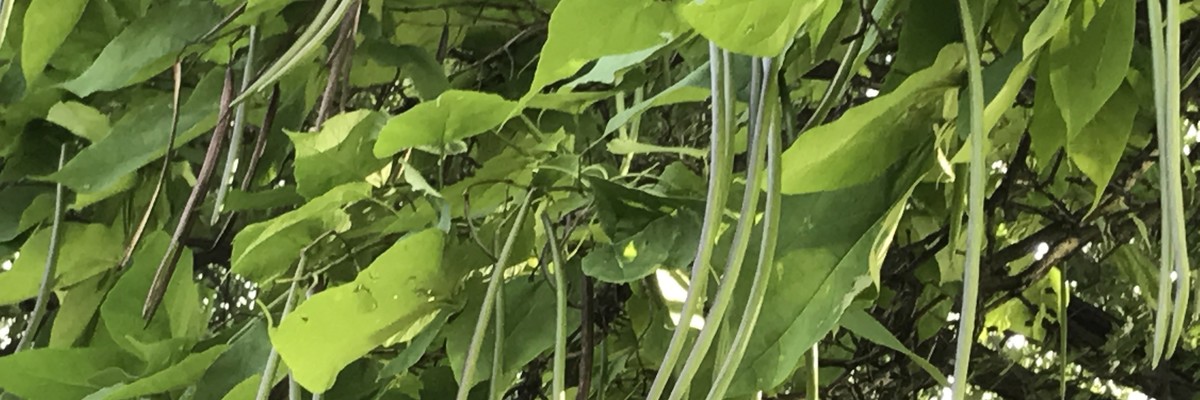
Description:
Catalpa trees are large, formidable shade trees known for their distinctive seed pods. Leaves are simple, opposite or whorled, and heart-shaped. The large leaf size makes them look almost tropical. Flowers emerge as large, magnificent clusters in June in Minnesota and are large, white, and bell-shaped with orange, yellow, or purple inner spotting. The flowers give way to long, green, "cigar-like" seed pods that can be up to 22 inches long.
Catalpa's native range is a small area at the confluence of the Mississippi and Ohio Rivers, but the trees have spread throughout North America and now can be found from Maine to Texas. Catalpa trees are used widely as street trees and are admired for their showy flowers, but their abundant flowers and seedpods produce a large amount of litter. The trees were historically used as fence posts and railroad ties, while the leaves, roots, seed pods, and bark have been used for various medicinal purposes. The word "catalpa" comes from the name of the Native Catawba people who lived in what is now North and South Carolina.
There are several catalpa trees planted throughout the St. Paul Campus; this particular tree is one of the largest.
Issues:
Catalpa trees are suspecptible to numerous pests, such as leaf spot, powdery mildew, catalpa midge, and verticillium wilt. The larvae of the catalpa sphinx caterpillar eat catalpa leaves and can defoliate entire trees, but the caterpillars themselves are prized as fish bait.
Other Resources:
